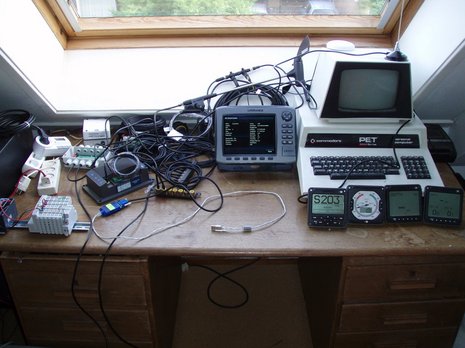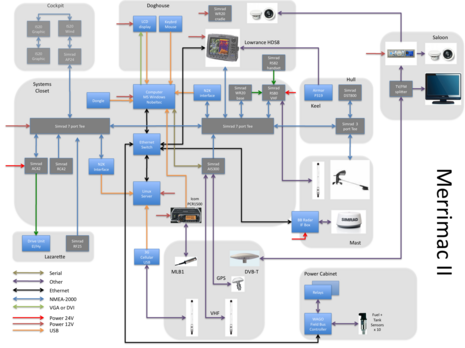NMEA 2000 opens up, in a Dutch attic!

I love this photo. It may look messy, but not only is one man's fine N2K+++ yacht system being tested here, but the standard itself is getting explored, possibly to the benefit of many boaters. This is Kees Verruijt's attic somewhere in the Netherlands and, as explained on his new Yacht Electronics blog, that Commodore PET is the "PC" he first learned programming on back in 1979. The rest of the gear is going on Merrimac II, a Stadship 56 now under construction that Kees and his family have obviously put a lot of thought into. Kees wants to extend the usefullness of his NMEA 2000 data system, even to his iPhone, and he's had to go to some serious trouble to do so...
But, in fact, I'm told that the "N2K Intelligent Gateway" described to me in 2007 is finally nearing completion (i.e. ready for official product certification), with the new and more descriptive title Third Party Gateway. Actually, Kees just got a beta version of just such a Gateway (the NGT-1 from Actisense), reports that it's way easier to use than the CANUSB gadget, and has already modified packetlogger to suit. I've been trying an NGT-1 too, and am tentatively impressed. Accessing N2K data, and even putting legitimate data back on the backbone, is going to get much easier for everyone, and much more affordable for developers. Cool. In fact, I'm hoping that few boaters will ever need the use of Kee's contributions, but how about a big Panbo hand for his efforts!


 Share
Share
This is terrific. Its about time the hardware hackers started taking on these protocols and doing some neat things with them.
I was thinking of doing the same, but I got distracted by my current efforts to reverse engineer the "ethernet" coming out of the back of my Garmin charplotter. Given enough time and a packet sniffer, we may be able to build cheaper PCs that can interpret and forward this data and do things we havent even considered yet!